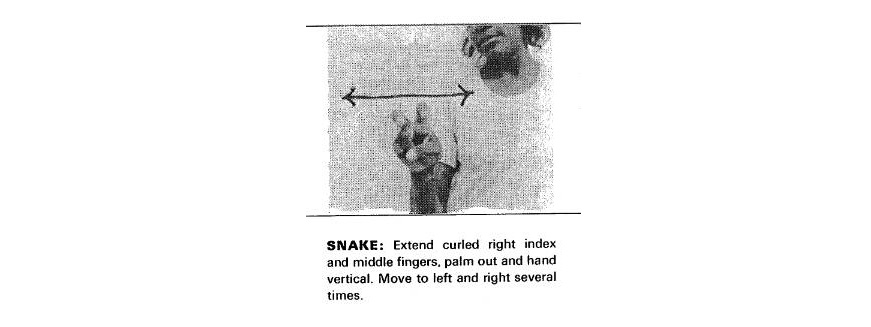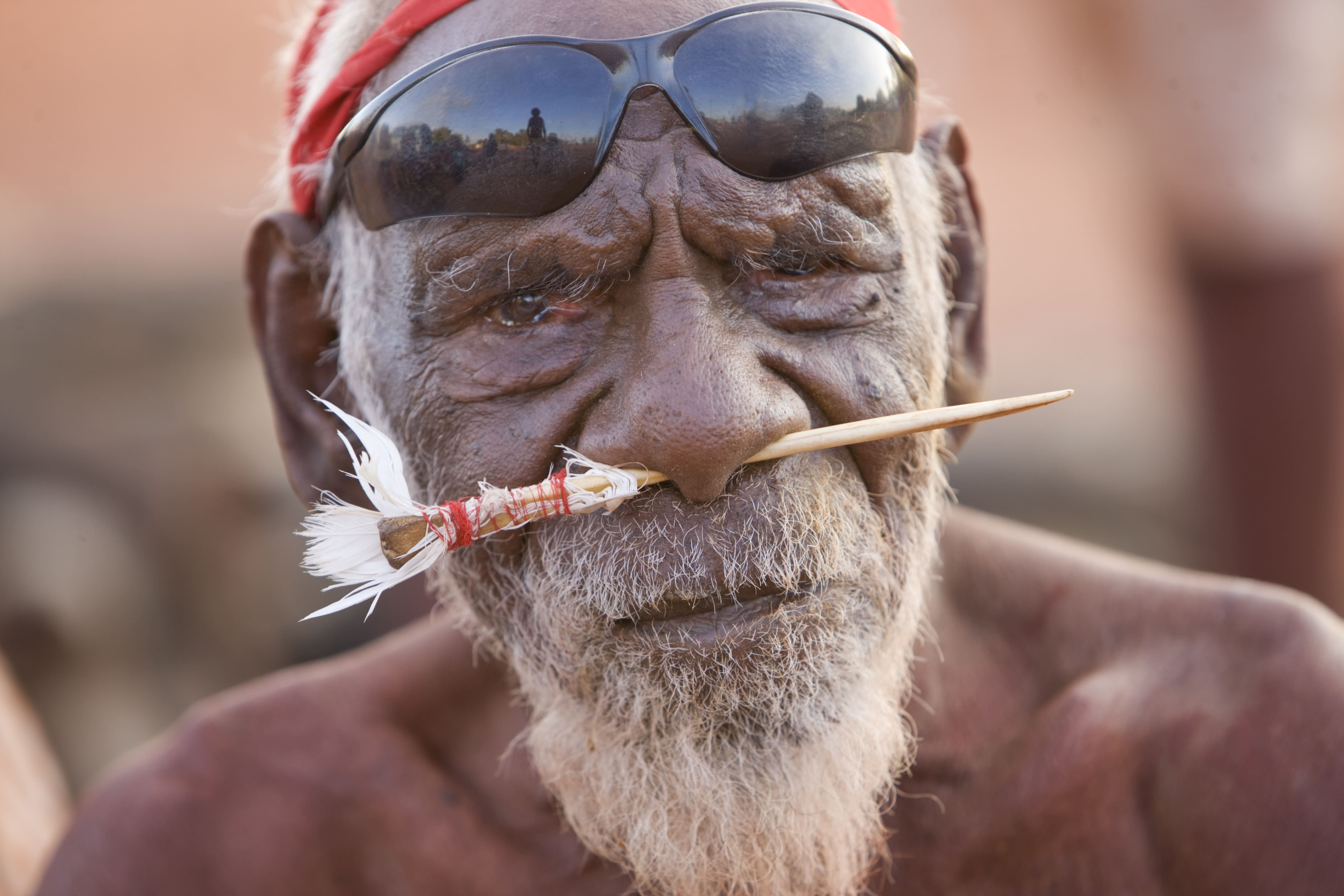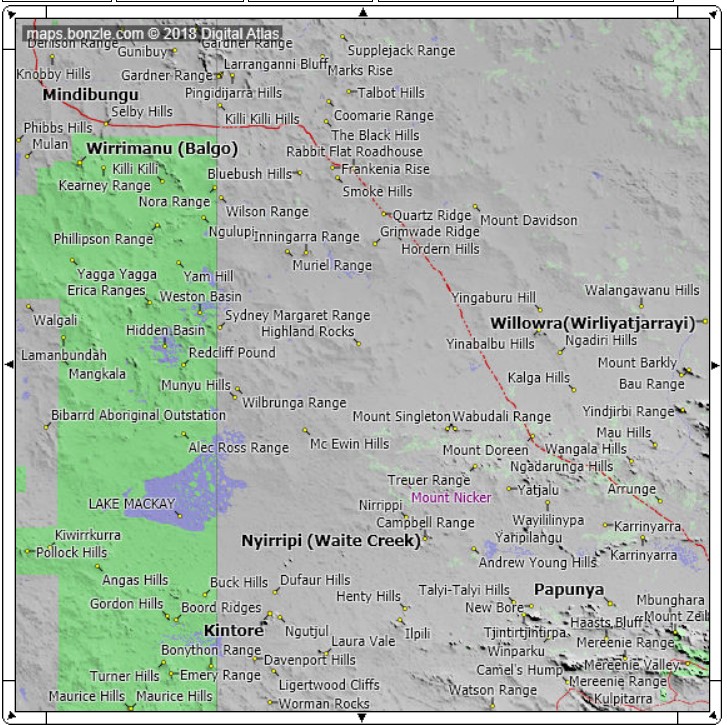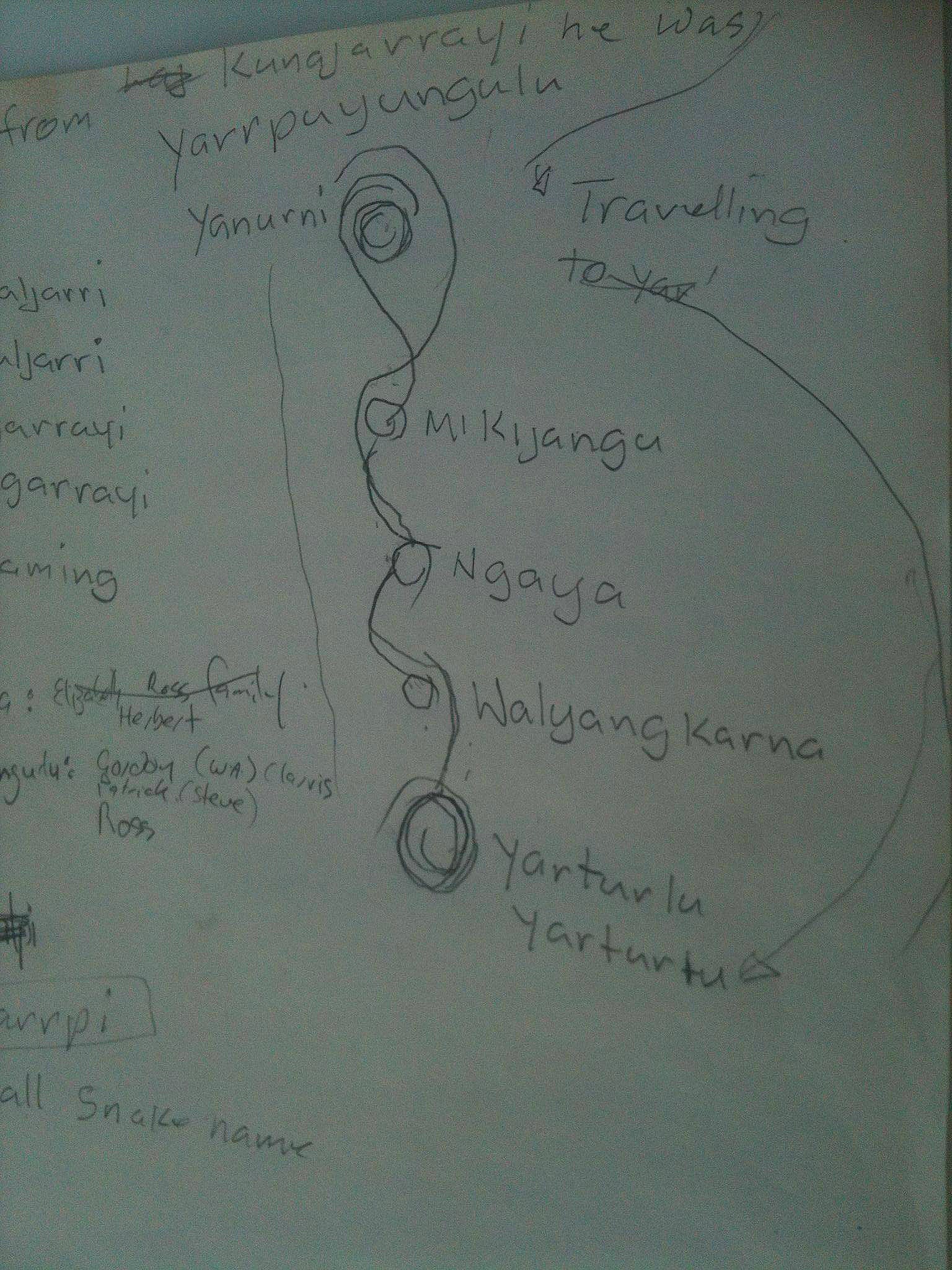Milpirri Banner - YARRPUYUNGULU - WARNA (Snake)
Dreaming Design and Places
This dreaming is a snake, whose personal name is Yarrpuyungulu. That is the name for the snake and the songline. The snake is called warna in Warlpiri which is a generic term for all poisonous snakes.
In the banner, the curved line is the snake, and the circles are the places that the snake travelled through on its way to Granites outstation which is called Pulkaji in Warlpiri. Henry Cook Jakamarra lists the sites (from the right of the design to the left) as Yanurni, Mikijangu, Ngaya, Walyangkarna, Yaturlu (Granites). The story starts at Kunajarayi whose European name is Mt Nicker.
At Kunajarayi the snake is a witchetty grub (called laju or yipilanji in Warlpiri); it changed into a snake on its way to the Granites outstation which is shown in the following map.
Find Granites outstation on Google Earth - Map
Belonging to Skin Groups
Japaljarri, Jungarrayi, Napaljarri and Nungarrayi (Yellow Group)
Moral
Wanta Patrick Jampijinpa suggests that the lesson in this story is about the role of mediation. It is about someone who stops the fight. In the story the snakes slams himself into the ground and sends rocks showering all over the place to try and disturb the fighting of the Jangapa possums.
Janganpa (possum) Milpirri banner - Photos / Information
Drawn By
Original banner drawing by Henry Jakamarra Cook, 2012.
Artist Profile
Henry Jakamarra Cook also known as Padi Padi was born around 1921. He is one of the oldest and most knowledgeable Warlpiri men alive. He was given his English name by Bob Hunterdale a long time ago at Mt Doreen station. Henry’s knowledge of country is exceptional. His bush skills are also first class, honed in his younger years when he lived in the desert around the Granites travelling from site to site and hunting with spear and boomerang. After leaving the desert he travelled as a stockman through the Northern Territory, Western Australia, New South Wales and Queensland. He is a master craftsman, painter and an accomplished hunter. Like many elders Henry has always loved being on country and has completed countless heritage surveys mapping Warlpiri lands to protect them from damage caused by mining exploration. He is an active force within Milpirri and has always been present on country visits with the school and IPA. He is also a larrikin, and prone to singing traditional songs very early in the morning while out on country. He is always good fun to be with out bush. Henry Cook’s outstation is the Granites known as Pulkaji or Yartalu-Yartalu.
Language
Warna, warna ngulaji yangka jamparli. Kuluparnta. Kajikangalpa yarlkirni tarnnga. Ngula karnalu warnaju ngarrirni.
A snake is that King Brown. That dangerous one. It can kill us if it bites us. That is what we call a poisonous snake.
Dictionary Source: Laughren, M., K. L. Hale, and Warlpiri Lexicology Group, 2005 Warlpiri-English Encyclopaedic Dictionary. (Accessed Via Kirrkirr Interface to Electronic Files.) University of Queensland.
Biology
Yarrpuyungulu (King Brown Snake) - Photo
Note that all poisonous snakes are classed as warna with the King Brown being the prototypical warna. This term is also extended to cover all snakes and snake-like reptiles. Poisonous snakes, warna in its narrow sense, are not considered edible, while most pythons are considered to be edible and hence classed as kuyu (meat).
Family
To find out more about this dreaming talk with these families: Herbert, Barnes, Payton and Elizabeth Nungarrayi Ross.
Kurdungurlu
Gordon family (WA), Steve Jampijinpa Patrick, Ross Family.
Further Reading
See Henry Jakamarra Cooks childrens book about the two wallabies - Story





